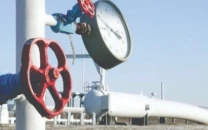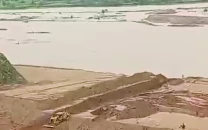The dead count
On November 26, 2024, Pakistan saw a significant protest that ended in division and disillusionment.

Despite all the complexities with India, we share common memories of Indian cinema that offer glimpses of reality and, at times, amusement through dialogues and characters that have become immortal. It may sound insensitive - and to many, even outrageous, as it involves lives and limbs - but if politics is a game of possibilities, it has also become a show of illusions and deception. Bollywood cult classic Sholay has given cinema-goers many memorable dialogues, and one that fits this column perfectly is: kitnay aadmi thay? That is: how many were there? Were they 278? Were they 150? Were they 12?
November 26, 2024 will go down in Pakistan's history as yet another day when the state exercised what it does best within the legal ambit - coercion. The Islamabad High Court, the 26th constitutional amendment and Imran Khan sitting in Adiala Jail had effectively ruled out D-Chowk as the protest venue. Yet, the protesters, under the guardianship of Bushra Bibi and the Chief Minister of Khyber Pakhtunkhwa, had their minds set on D-Chowk. It was made clear to the protesters: unless Khan was released, D-Chowk would remain occupied.
For a moment, many anticipated a re-enactment of the 2014 dharna. The determined voice of IK's veiled wife, the anguished face of Gandapur and the sizeable crowd cheering their leadership all echoed familiar scenes.
The protesters' resolve to enter container-locked Islamabad was palpable. A large portion hailed from KP, with few from Punjab in sight. Other provinces had little to no representation, either among protesters or leadership. Some even spotted Afghans in the crowd. The protesters stood shoulder to shoulder with the leadership, hopeful that this protest would free IK and other top leaders languishing in jail for over a year.
Bushra Bibi, who had virtually no media presence beyond negative portrayals of her alleged use of mystical powers, was expected to demonstrate resilience when the state inevitably pressured the protesters to obey the law and IK's nod to shift the protest to an alternate venue. As dusk enveloped Islamabad, the operation began in pitch darkness. The lights were turned off, and the air filled with gunshots from tear gas and rubber bullets, alongside the anguished cries of protesters.
The protesters believed that once the darkness lifted, they would find Bushra Bibi and Gandapur steadfast. They envisioned a new day dawning - a new chapter in PTI's long history of protests. A chapter was indeed added, but not one of valiant leadership. Instead, it chronicled leaders speeding away in their SUVs, leaving the protesters to fend for themselves. The dawn brought not celebration, but division and discontent within PTI's provincial leadership.
From protesters to journalists, social workers to political scientists, police officers to doctors, and Pakistanis on social media, everyone was asking: kitnay aadmi thay? How many were there? How many had died? Speculation about the death toll ranged from a handful to hundreds. The government denied the higher numbers. Within the government, some estranged leaders acknowledged casualties, debating only the exact toll. Ultimately, the central leadership distanced itself from these speculations, settling on a figure of 12 deaths.
From the so-called do or die protest, it was reduced to a number game of exact casualties.
This brings me to another Sholay dialogue: Tera kya hoga, Kaalya? - What will become of you, Kaalya? This famous character from the film was considered as valiant and impenetrable as Bushra Bibi and the Gandapur duo. Unlike them, however, Kaalya did not betray his leader, Gabbar. He returned to the den and accepted defeat without shifting blame. He did not abandon the battlefield without putting up a fight.
In the aftermath of this chaotic episode, PTI faces a critical juncture. The party must reflect on its trajectory: will it continue to rely on social media bravado and mystical narratives, or will it discover the political courage to galvanise its supporters around some ideology?
Leadership is not just about rhetoric; it's about standing firm when it matters most. The events of November 26 serve as a stark reminder that true leadership does not vanish into the night but remains steadfast on the battlefield, even in the face of adversity.
The death of even one person is a huge loss; however, the death of leadership due to disillusionment is far more serious. It is now for PTI to decide: does it want to remain a party reduced to counting its dead in protests, or does it want to become a serious political contender that knows exactly when to push back and bring the nemesis closer?
The answer will determine whether the party can rise from the shadows of its own making or be remembered as a fleeting illusion in Pakistan's turbulent political landscape.














COMMENTS
Comments are moderated and generally will be posted if they are on-topic and not abusive.
For more information, please see our Comments FAQ